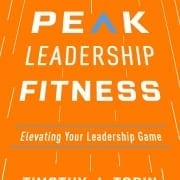Listening Biases: How Influencers Unwittingly Restrict Possibilities
Do you enter conversations with a goal, or set of expectations? Do you assume you’ll have solutions for your Communication Partners (CPs)? Do you listen carefully to pose the best questions to enable you to fulfill your expectations? Do you assume the responses to your questions provide an accurate representation of the full fact pattern – ‘good’ data – to base your follow-on questions on? Do you assume your history of similar topics provides a route to an optimal outcome?
If any of the above are true, you’re biasing your conversation.
- By entering conversations with assumptions and personal goals,
- and listening according to historic, unconscious, self-directed filters,
- you unwittingly direct conversations
- to your range of expectations and familiarity
- and potentially miss a more optimal outcome.
In other words, your unconscious inhibits and biases optimal results. But it’s not your fault.
Our Brains Cause a Gap Between What’s Said and What’s Heard
The most surprising takeaway from my year of research for my book on closing the gap between what’s said and what’s heard was learning how little of what we think we hear is unbiased, or even accurate. Indeed, it’s pretty rare for us to hear precisely what another intends us to hear. Yet that doesn’t stop us from translating what’s said into what we want to hear.
Employing biases, assumptions, triggers, memory tricks, and habit (filters that act as information sieves) our brains take a habitual route when listening to others, alter and omit at will, and don’t even tell us what’s been transformed, regardless of our desire to be neutral. So the Other might say ABC and our brains actually tell us they said ABL. I once lost a business partner because he ‘heard’ me say X when three of us confirmed I said Y. “I was right here! Why are you all lying to me! I KNOW she said that!” And he walked out in a self-generated rage.
Indeed, as outsiders, we cannot ever know the full range of givens within our CPs innermost thinking. Every person, every situation, every conversation is unique. And given variances in our beliefs/values, background, identity, etc., our inability to accurately hear exactly what is intended causes us to unintentionally end up working with data of unknowable accuracy, causing a restricted, speculative route to understanding or success.
Net net, we unwittingly base our conversation, goals, questions, intuitive responses and offerings on an assumption of what we think has been said, and we fully succeed only with those whose biases match our own. [Note: for those who want to manage this problem, I’ve developed a work-around in Chapter 6 of What?)
Entering Conversations Without Bias
The problem is compounded when we enter and continue conversations with unconscious biases that further restrict possibility. Because of the potential constraints, we must take extra care to enter and guide conversations without bias. But our natural listening habits make that difficult:
- by biasing the framework of the conversation to the goals we wish to achieve, we overlook alternative, congruent outcomes. Sellers, coaches, leaders, and managers often enter conversations with expectations and goals rather than collaboratively setting a viable frame and together discovering possibility.
- by listening only for what we’re (consciously or unconsciously) focused on hearing, we overlook a broader range of possible outcomes. Sellers, negotiators, leaders, help desk professionals, and coaches often listen for what they want to hear so they can say what they want/are trained to say, or pose biased questions, and possibly miss real opportunities to promote agreement.
Once we have expectations, success is restricted to the overlap between our needs and the CPs; the real problems and solutions lie outside. Here are some ideas to help you create conversations that avoid restriction:
- Shift your goal as an influencer to facilitating the route to change. You’ll never have the full fact pattern, or the weight and implications of each element that has created and maintains the status quo. But you can lead a route to change using systems thinking and enabling your CP to engage their own change, congruently.
- Enter each conversation with a willingness to serve the greater good within the bounds of what you have to offer, rather than meet a specific outcome. Any expectations or goals limit outcomes. The Other’s outcome will become obvious to them.
- Enter with a blank brain, as a neutral navigator, servant leader, change facilitator.
- Trust that your CP has her own answers. Your job is to help her find them. This is particularly hard for coaches and leaders who believe they must influence the outcome toward a goal, or use their expertise to help the person change the way the influencer believes they should. (And yes, all influencers, sellers, leaders, negotiators, and coaches are guilty of this.)
- Stay away from data gathering. Stick to understanding how the status quo became established, and directing systemic change from there. Your biased questions will only extract biased answers. Use questions focused on change because you’ll never gather the full fact pattern anyway. Neutral questions like “What has stopped you from making the change before now?” is an example of a question addressed to systemic change. [Note: I’ve developed Facilitative Questions that eschew information gathering and lead systemic change through unconscious thinking patterns.]
- Make ‘discovery of a route to congruent change’ your goal, not a specific behavior.
- Get rid of your ego, your need to be right or smart or have the answers. Until your CP finds a way to recognize their own unconscious issues, and design congruent change that matches their idiosyncratic ‘givens’, you aren’t helpful regardless of how much you think you know.
Here are the steps everyone goes down to discover their own answers:
- What is the complete landscape of the status quo? The hidden elements that caused, and perpetuate, the current state?
- How has the person attempted to fix the problem until now? What caused her to fail? How has she continued to maintain her current behaviors? Why isn’t this still working now (regardless of success or failure, all systems create and maintain their status quo for Systems Congruence)?
- What internal capabilities does he have, but may be used for other actions, to substitute more helpful choices? What has stopped him from making this substitution until now?
- What does the client think he’s missing to get him to success, and how might he use you to help?
By assuming your client has his own answers hidden in his unconscious that just need to be found, by acting merely as a facilitator, by eschewing information gathering questions and pitches, you can help Others design their own fix, avoid bias, stop wasting time on those who will never buy-in, and truly serve another. You won’t have the type of control you’re used to, but thinking with a systems brain, you’ll have a much more powerful control: you’ll be facilitating real change.
About the Author














Leave a Reply
Want to join the discussion?Feel free to contribute!